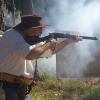
Cloth Lined Wallet Card Pocket Tutorial. My Way, At Least.
By
JoeSnuffie, in Purses, Wallets, Belts and Miscellaneous Pocket Items

By
JoeSnuffie, in Purses, Wallets, Belts and Miscellaneous Pocket Items